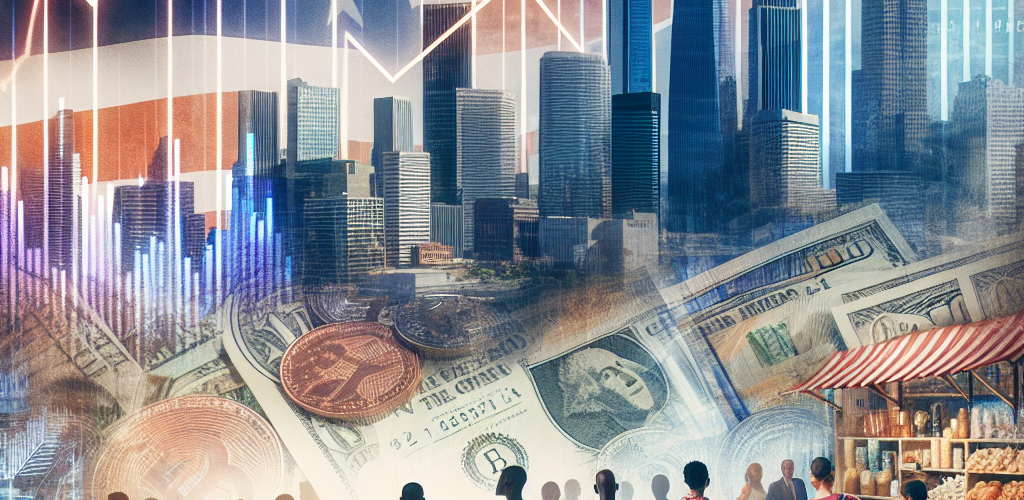“The State of the US Economy”
2024년 10월 20일

Title: “The State of the US Economy”_2
1. Economic Growth and GDP
2. Unemployment Rate
3. Inflation and Consumer Prices
4. Trade and Tariffs
5. Federal Reserve Policies and Interest Rates
Exploring the current status of the US economy in key areas like growth, employment, inflation, trade, and monetary policies.
Economic Growth and GDP
The US economy has been experiencing steady growth in its Gross Domestic Product (GDP). In recent years, the GDP has shown positive trends, indicating a robust economy. Factors contributing to this growth include increased consumer spending, business investments, and government spending. The GDP growth reflects the overall health of the economy, showing how well the country is producing goods and services. The GDP growth rate is closely monitored by economists and policymakers as it influences various economic policies and decisions.
Unemployment Rate
The unemployment rate in the US is a crucial indicator of the economy’s health. A low unemployment rate signifies a strong job market, indicating that more people are employed. On the other hand, a high unemployment rate can indicate economic challenges. The current trends show a decreasing unemployment rate, which is positive for the economy. It implies that more individuals are finding employment and contributing to economic growth. The unemployment rate is closely monitored by policymakers to implement strategies to support job creation and maintain a stable economy.
Inflation and Consumer Prices
Inflation refers to the increase in prices of goods and services over time. It affects the purchasing power of consumers and the overall cost of living. Consumer prices are influenced by various factors such as demand, supply, and market conditions. A moderate level of inflation is considered healthy for the economy as it indicates economic growth. However, high inflation can erode the value of money and impact consumer spending. The Federal Reserve closely monitors inflation rates and implements monetary policies to maintain price stability.
Trade and Tariffs
Trade plays a significant role in the US economy, influencing the movement of goods and services across borders. The US engages in trade agreements with various countries to promote economic growth and create job opportunities. However, tariffs imposed on imports and exports can impact the cost of goods and trade relations. Trade tensions between the US and other nations can lead to disruptions in global markets and affect industries relying on international trade. It is essential for policymakers to navigate trade agreements and tariffs to ensure a balanced approach that benefits the economy.
Federal Reserve Policies and Interest Rates
The Federal Reserve plays a pivotal role in shaping the US economy through its monetary policies. One of the key tools used by the Federal Reserve is setting interest rates. Interest rates influence borrowing costs, investment decisions, and consumer spending. A decrease in interest rates can stimulate economic growth by encouraging borrowing and spending, while an increase can help control inflation. The Federal Reserve carefully analyzes economic indicators to make decisions that promote economic stability and growth.